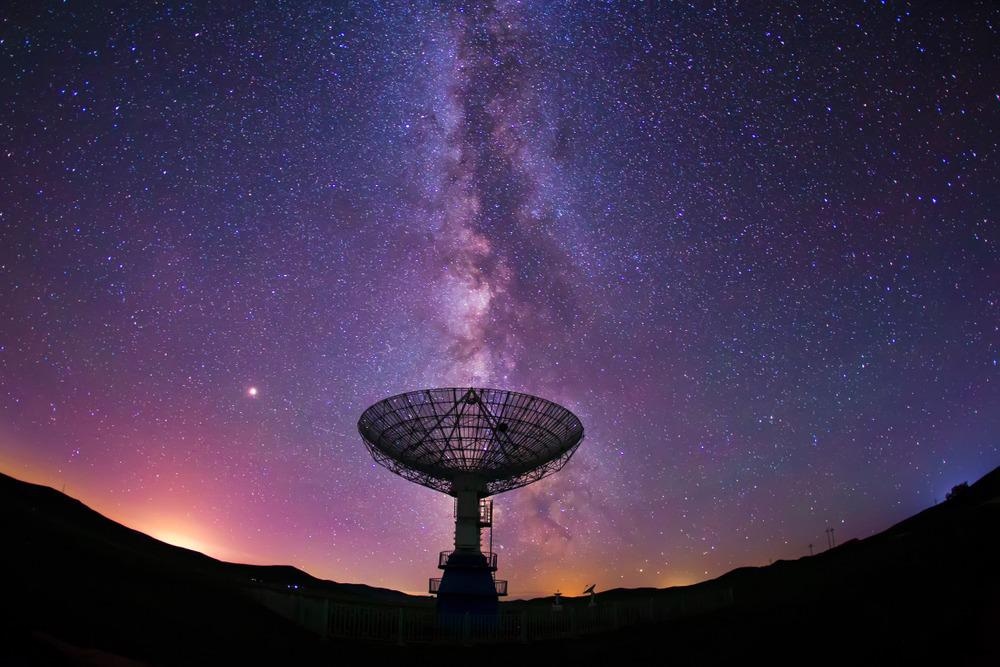An international consortium of institutions in the UK, Spain, and the Canary Islands is building an enormous four-meter wide telescope driven by robotics. The automatic system, which will cost £24 million to construct in the Canary Islands, will be able to respond quickly to extremely dynamic astronomical events like extraterrestrial collisions and exploding stars that fade from view all too quickly.

Image Credit: zhengzaishuru/Shutterstock.com
When construction is complete, astronomers will be able to use the New Robotic Telescope (NRT) to observe and ultimately better understand processes like stars' destruction and creation, the formation of black holes, and what happens when celestial bodies collide.
Using Robotic Telescopes to Explore Space
Robotic telescopes combine telescope and detector systems to automatically scan the skies.
Professional astronomers classify telescopes as robotic when they can make observations without a human operator, even if a human initiates the observations. Some robotic telescopes use artificial intelligence (AI) software to assist or automate scheduling decisions as well.
Robotic telescopes are complex systems made up of a number of subsystems. Pointing the telescope, operating the detector (usually a CCD camera), controlling the telescope enclosure or dome, adjusting the focus, detecting weather conditions, and a host of other capabilities may all be included within the telescope's design.
Controlling the motors, sensors, devices, and subsystems in the machinery is a task for automation itself. Supervisory control systems manage robotic telescopes with AI to keep everything working smoothly.
Historically, robotic telescopes have been limited by their size. The highly precise and delicate operations of large research facilities traditionally required human attendants, although gradually more processes within these facilities have been automated.
Why Is Speed Important in Space Observation?
The NRT is designed to be highly sensitive to dynamic inputs, capable of spotting movement in the night sky almost immediately. The robotic machinery is also incredibly efficient, enabling the clamshell roof to open and the massive telescope to move into position quickly to capture astronomical events quickly.
Dr. Chris Copperwheat, Liverpool John Moores University (LJMU) "Astronomer in Charge" explained the importance of speed in space observation:
Speed is key and gives us a view of mysteries of the universe which have never been observed before. So much happens in the night sky that we simply miss because we are on to it too late. The NRT will give us an almost immediate eye onto movements and phenomena, giving us an unprecedented insight into the physics of the changing sky.
Dr. Chris Copperwheat, Liverpool John Moores University
The active dynamism of our universe is sometimes hard to imagine, considering the sheer expanse of the universe that we can see through the night sky. However, explosive and cataclysmic events are happening in the vastness of space all the time. These events are unpredictable and very transient (they fade from view quickly), making them difficult to study.
Will NRT Improve Our Astronomical Reaction Time?
The NRT is being built by institutions in the UK, Spain, and the Canary Islands. The UK's LJMU, alongside the University of Oviedo in northern Spain and the Institute of Astrophysics of the Canary Islands (IAC).
When complete, the NRT will be linked up with telescopes aboard satellites in space, or survey telescopes at high points on Earth. Transient triggers from these telescopes will alert the NRT of celestial events as they are first beginning, and the telescope's robotic machinery will swiftly move it into position to capture the event.
The NRT will be capable of responding within 30 seconds of receiving a signal, enabling it to capture the first seconds after a supernova explodes in space. This will significantly boost our reaction time for astronomical events and greatly increase the data we have on the universe's huge, dynamic processes.
How Will The NRT Work?
When it is not responding to alerts of explosive astronomical events, the NRT will choose its own objects of study using a sophisticated algorithm. Most of the operations of the NRT will be supervised remotely, and scientists around the world can make requests and receive the telescope's data through the web.
The NRT will operate within a network of satellite-based telescopes and terrestrial facilities. This multi-facility international cooperation was designed to capture as much data on transient celestial events as possible.
A 4-meter primary mirror composed of 18 individual hexagonal segments will make the NRT four times more sensitive than LJMU's other powerful telescope, the LT (Liverpool Telescope).
The larger NRT is being built alongside the LT on the island of La Palma in the Canaries. The LT has a highly successful legacy of space observation that the NRT will build upon.
Who Will Use The NRT?
Astronomers around the world will use the NRT to gather data on fast-acting celestial processes.
The atoms that combine to make molecules of matter in the universe are forged inside exploding stars and supernovae. Gaining a better understanding of these violent events with NRT data captured in their first few seconds could help us unlock mysteries of the universe such as dark matter and what happened after the Big Bang.
Astronomers studying gamma-ray bursts or hunting for new stars, systems, and planets will also use the NRT's data to advance their research.
Continue reading: Space Swimmers: How Microrobots Could Uncover the Mysteries of Planetary Oceans.
References and Further Reading
Allan, A. (2004) eSTAR: Astronomers, Agents and when Robotic Telescopes aren't… Harvard. Available at: https://ui.adsabs.harvard.edu/abs/2004ASPC..314..597A/abstract
New Robotic Telescope (2021) New Robotic Telescope. [online] Available at: https://www.robotictelescope.org/
New Robotic Telescope (2021) UK support for world's largest robotic telescope. [online] Available at: https://www.robotictelescope.org/post/uk-support-for-world-s-largest-robotic-telescope
Disclaimer: The views expressed here are those of the author expressed in their private capacity and do not necessarily represent the views of AZoM.com Limited T/A AZoNetwork the owner and operator of this website. This disclaimer forms part of the Terms and conditions of use of this website.